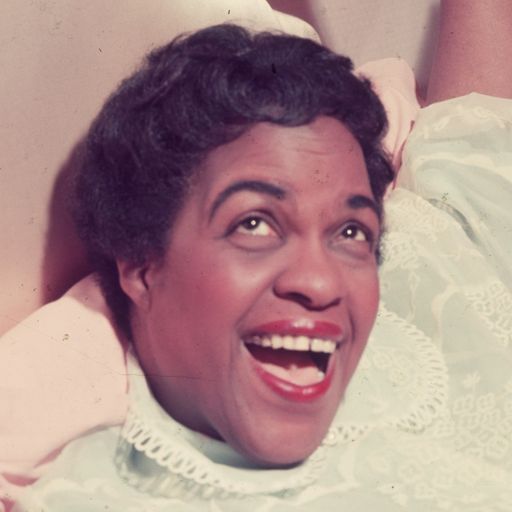
Black History Month: 55 years ago, this was Britain's 'most racist' street. What's it like now in 2020?
By Ashna Hurynag, news correspondent
Friday 30 October 2020 09:16, UK
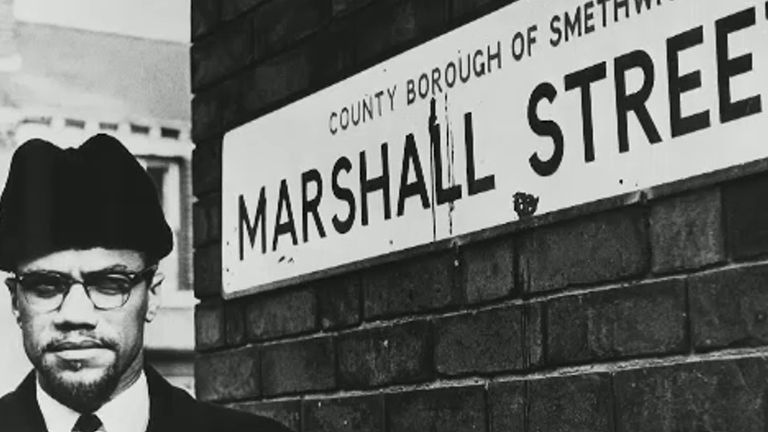
Image: Malcolm X described Marshall Street as 'worse than the United States'
The first thing that strikes you about Marshall Street in Smethwick is that it's quite unassuming.
The terraced houses that line the street are like any other in Britain, but a closer look and there are signs of individuality, diversity and culture.
Some have stained glass windows engraved with Islamic scripture, others have mugs of tea on top of doilies on the dining room table and I can hear the curious blend of daytime television and South Asian music blasting out of adjacent houses.
https://e3.365dm.com/20/10/768x432/skynews-birmingham-1960s_5151894.jpg…">
Image: New Street in Birmingham city centre in the 1960s
But this multicultural street is far from what it once was.
In the 1960s, this was once known as the most racist street in Britain.
Locals lobbied the council to buy up empty houses and only rent them to white families.
Some pubs and bars in the area barred anyone of colour from entering the premises.
It was deemed not safe for a black or Asian person to walk the streets alone for fear of being attacked.
It's an ugly history that saw abuse hurled at ethnic minorities.
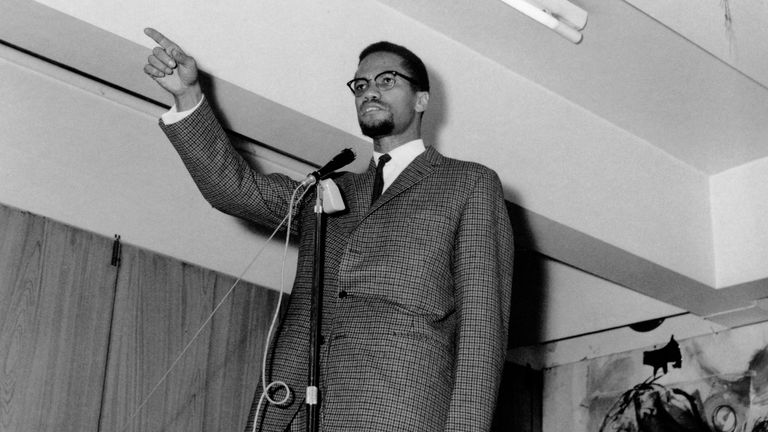
Image: Malcolm X speaking in the UK in November 1964
Living among the chaos was local campaigner Avtar Singh Jouhl, then a prominent member of the Indian Workers' Association.
He wanted to share this unfairness with the world and decided to write to a well-known civil rights activist across the pond and invite him to Smethwick.
His invitation was accepted and into this unlikely corner of the West Midlands, flew one of the world's key fighters for equality, American civil rights leader, Malcolm X.
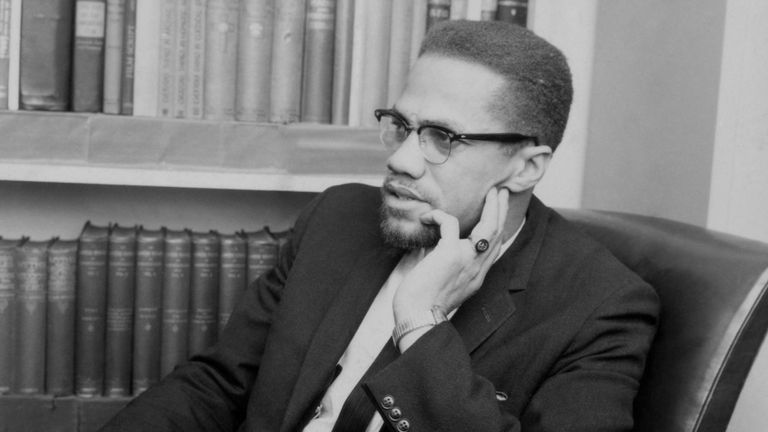
Image: Malcolm X in London in 1964
Speaking to Sky News, nearly 55 years on, Mr Jouhl recounts the memory: "We extended the invitation in February 1964, I wanted him to witness the segregation in Smethwick.
"One of the members of the association picked him up from the airport and brought him to the street. There were about 20 people gathered there with me plus some local press.
"We spoke about the local politics and how the local council were planning to buy up the houses on Marshall Street so no person of colour could buy the houses or rent them out."
Referencing that no black or Asian person would usually walk alone on the street for fear of trouble, Mr Jouhl says their guest wanted to make a stand.
"We offered to accompany him to walk on the street, but he said no, he wanted to walk alone. He said that if there was any trouble he would handle it."
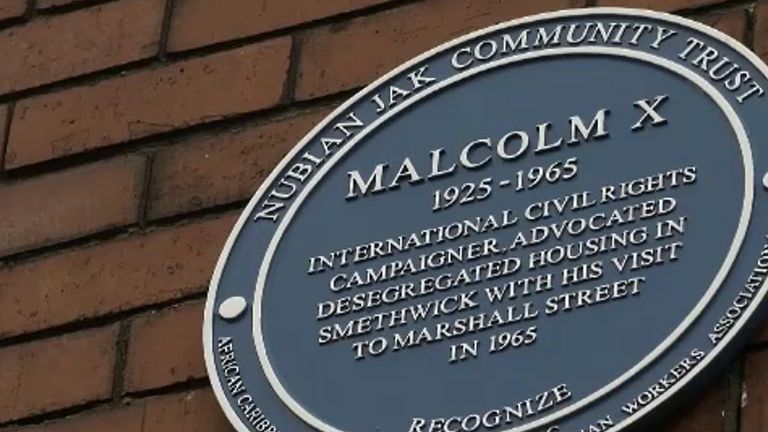
Image: A plaque marks Malcolm X's visit to Marshall Street
After observing the street and experiencing being under the watchful gaze of its residents, the American activist made a comment to the West Midlands campaigner that he has never forgotten: "This is worse than the United States."
Mr Jouhl says the visit was an "act of solidarity and symbolic".
The two men went inside the local pub at the end of the street, which was reserved just for people who were white.
:: Subscribe to the Daily podcast on Apple Podcasts, Google Podcasts, Spotify, Spreaker
He says the air shifted as soon as the pair entered the pub: "We went in and I ordered a couple of drinks but the bartender said 'Mr Jouhl, you know we don't serve coloured people here', Malcolm X asked why, and she said the landlord said not to."
The street has evolved from its past. It's now a mix of cultures, a black man, Derrick, lives next door to Ann, who is white.
Next to both of them, is a house bearing a blue plaque marking X's visit.
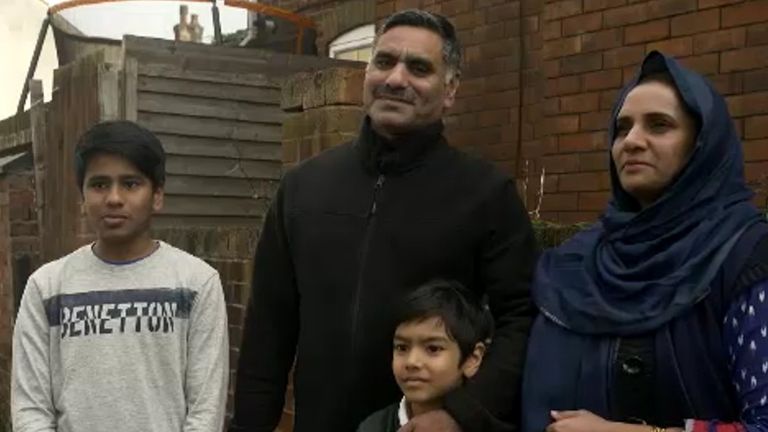
Image:12-year old Shafin Muhammad (L) says it's 'really cool' that Malcolm X visited
Inside lives 12-year old Shafin Muhammad. He moved into the house with his family unaware of the street's history, but after researching and reading about the visit, its significance is not lost on him.
Speaking to Sky News, Shafin is proud to live on the street: "It's really cool that a person who fought for Black Lives [Matter] came here.
The most successful black artist you've probably never heard of
"It just represents us, because we live in the house now. It feels nice that people ask about the plaque on the wall because we can tell them about it and share the history."
But for many on the street, there is still a long way to go. There's not as much dodging of racial slurs compared to 55 years ago, but they say racial injustice is not history.
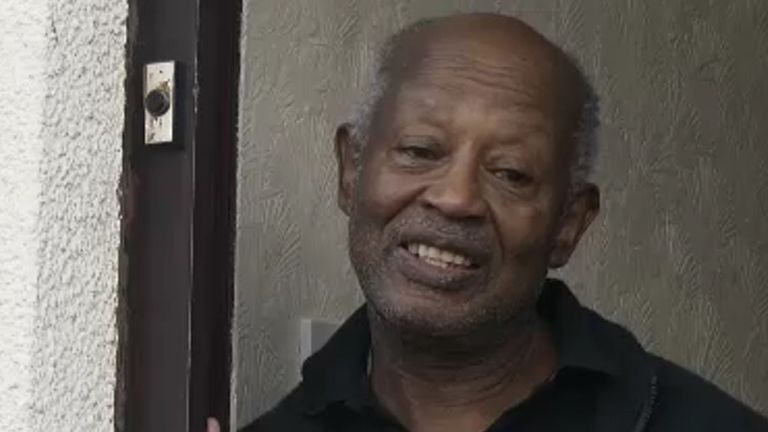
Image:Derrick says there's still racism in the area
Derrick, a resident who's lived in the area his whole life explains: "Things change but the problem is still there. It was racist then and it's still racist now, and I think nothing's changed".
Mr Jouhl emphasises this too.
Speaking to Sky News the 82-year-old says: "Whilst the 'colour bar' has gone, institutional racism is still there and is very much an issue.
"Rather than overt racism, racism has become covert. We've still got a long way to go because covert racism is still here."
These are issues he believes are becoming increasingly hard to ignore.
As race and equality once again ignite debate, Marshall Street at least, is well-versed in lessons of the past.


